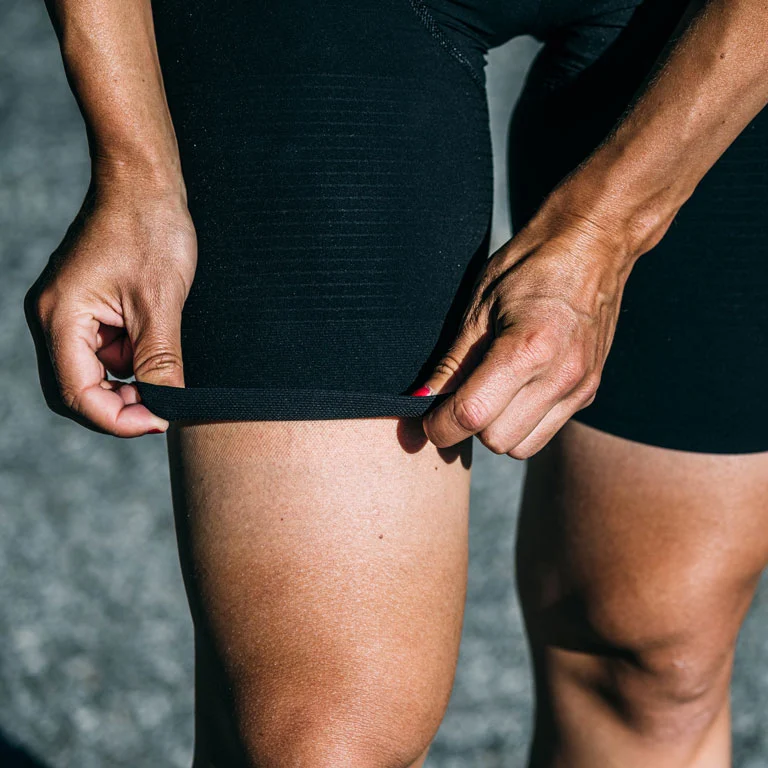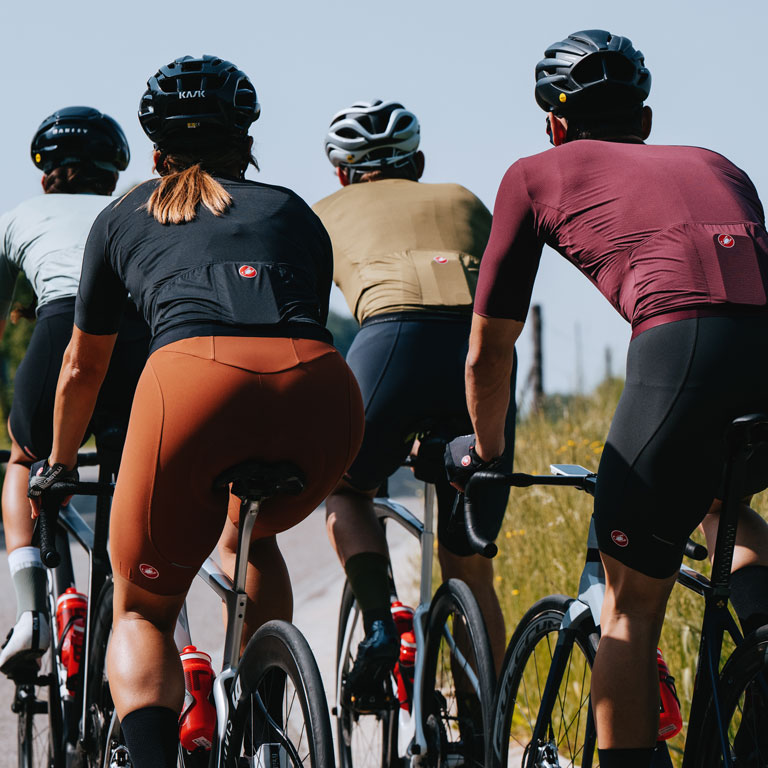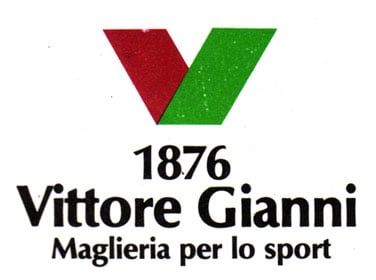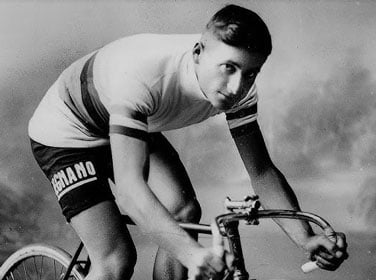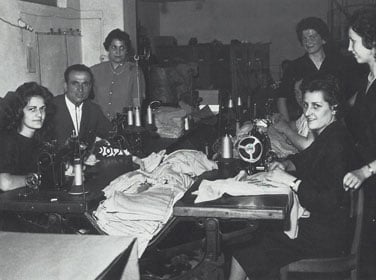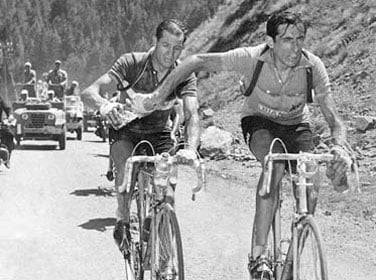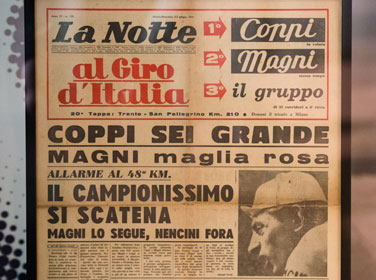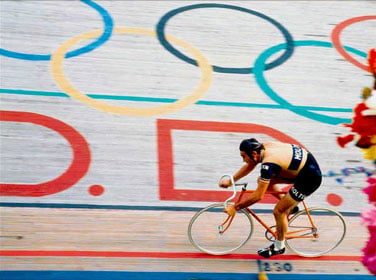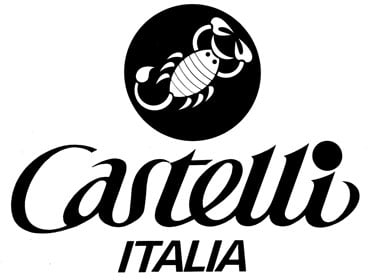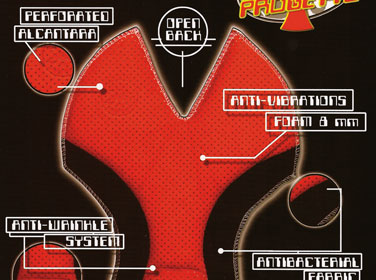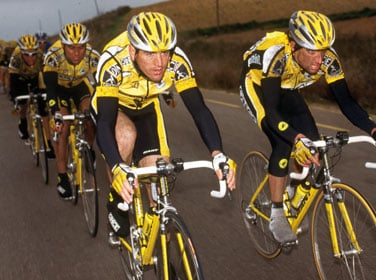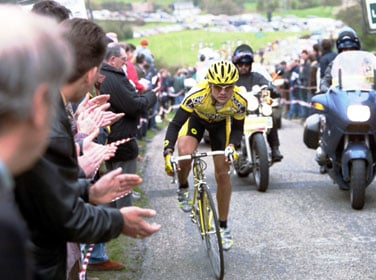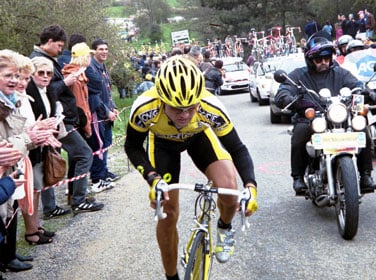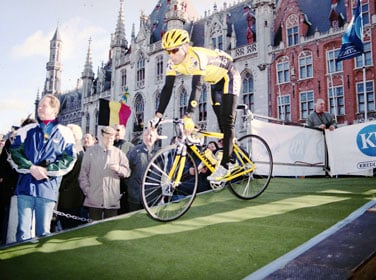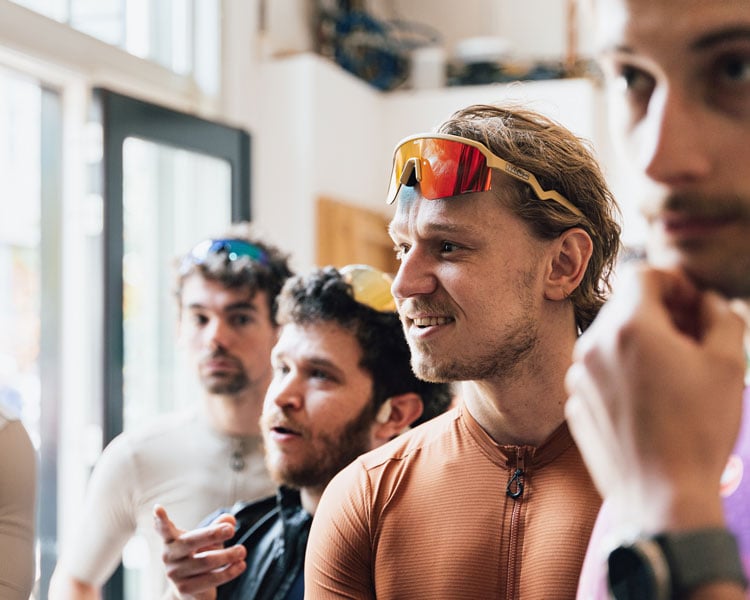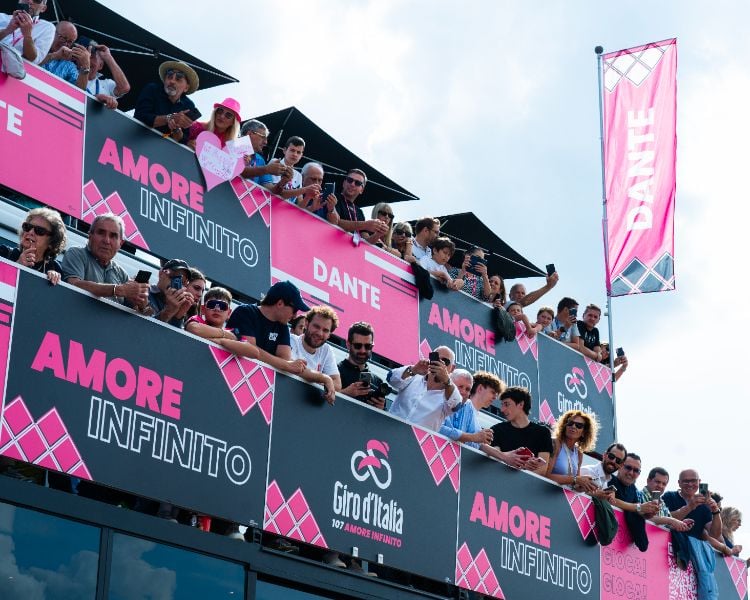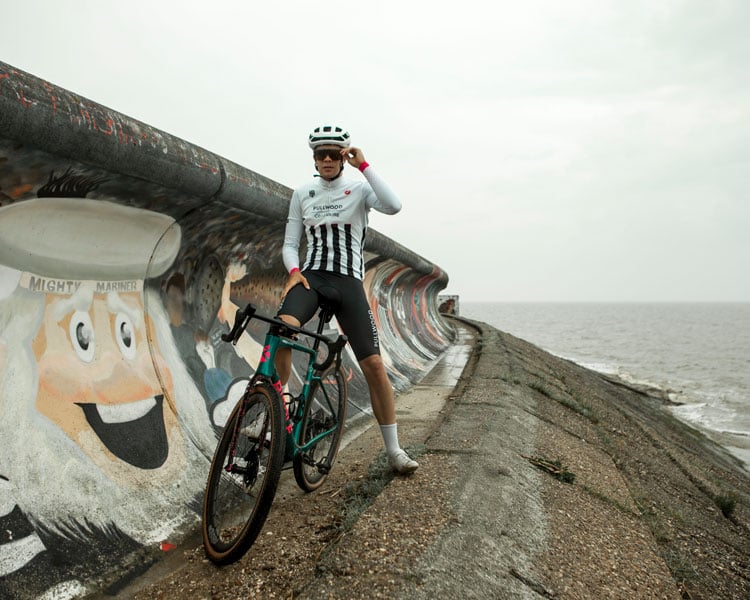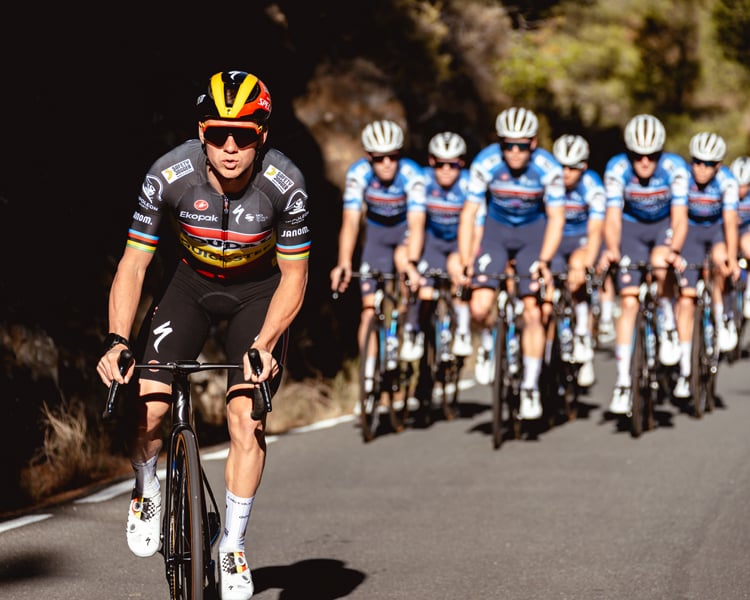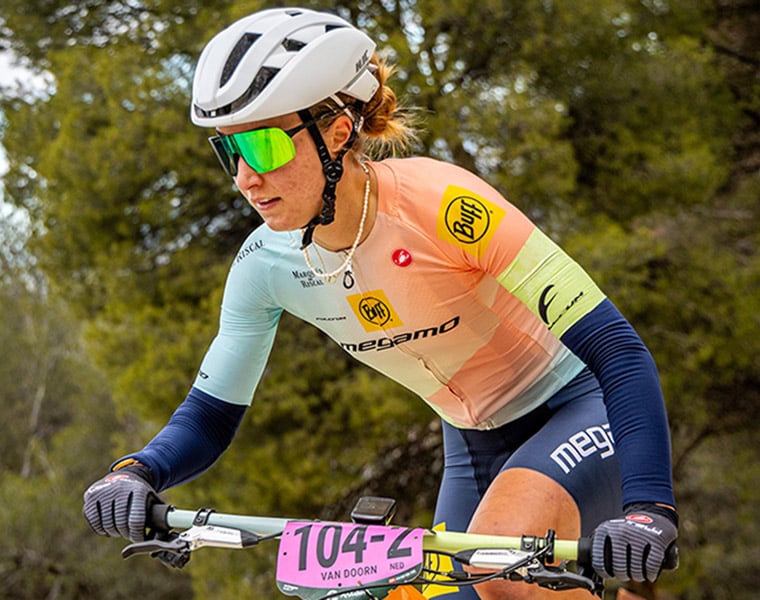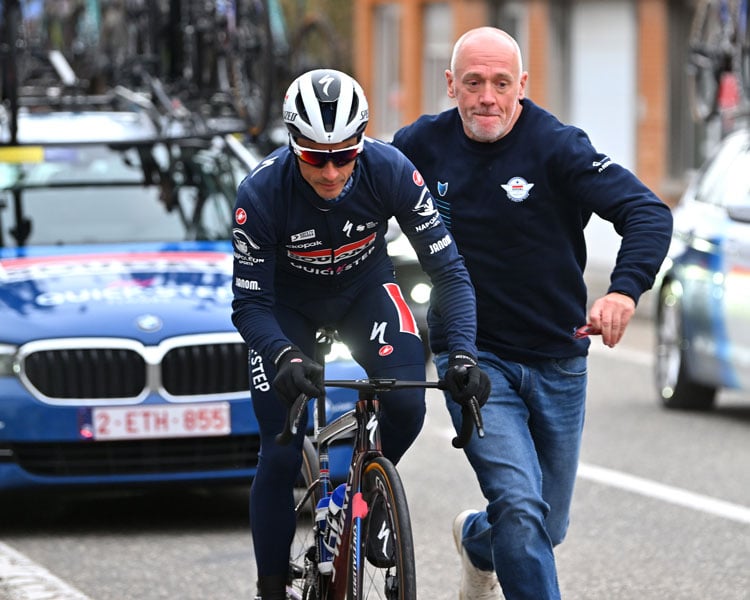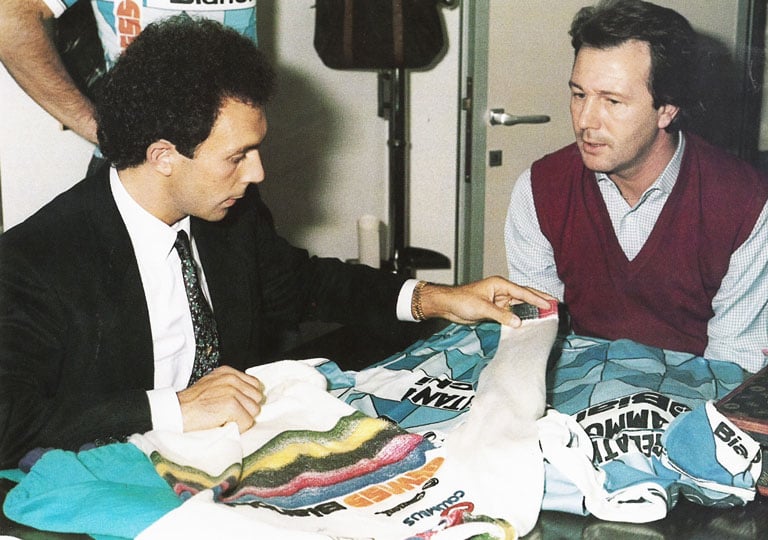
Castelli: Pioneering the Revolution in Cycling
This story dates back almost 150 years, long before the name Castelli and its iconic scorpion logo. It all began in 1876, when a Milanese tailor named Vittore Gianni opened his namesake shop in the center of Milan. There, he made clothing for Milan, Juventus, and the Milanese ballet company. The first cycling garments were produced in the 1910s for the champion of the time, Alfredo Binda.
In 1935, Armando Castelli joined Gianni's company and purchased it in 1939, keeping high-profile clients such as cycling legends Gino Bartali and Fausto Coppi. Armando’s son, Maurizio, learned the trade but focused on the family business only after a cycling injury at the age of 18.
In 1972, "The Cannibal" Eddy Merckx wore the first bodysuit designed by the company to set the hour record. Two years later, in 1974, Maurizio took over the company and brought his revolutionary idea to life by founding the Castelli brand and its scorpion logo.
In 1935, Armando Castelli joined Gianni's company and purchased it in 1939, keeping high-profile clients such as cycling legends Gino Bartali and Fausto Coppi. Armando’s son, Maurizio, learned the trade but focused on the family business only after a cycling injury at the age of 18.
In 1972, "The Cannibal" Eddy Merckx wore the first bodysuit designed by the company to set the hour record. Two years later, in 1974, Maurizio took over the company and brought his revolutionary idea to life by founding the Castelli brand and its scorpion logo.
THE YEARS OF THE SCORPION
A few years passed, and in March 1977, Castelli introduced the first of many important innovations: the first-ever aerodynamic shorts made from Lycra® to be sold to the public and used in professional races. Until then, cycling shorts were made of wool, a material that kept you too warm and uncomfortable in the saddle. This new synthetic fiber radically changed the way cycling was approached, bringing lightness, elasticity, and comfort to shorts that were previously anything but functional. Thus, during the Milan-San Remo race, the teams wearing Castelli sported these shorts for the first time. The idea proved to be a success, as the following week, many amateur cyclists lined up outside the company, all eager to get their hands on the best shorts of the moment.
Thanks to Maurizio's brilliance, in 1979 Castelli was awarded the prestigious Discobolo d'Oro, an annual prize still given today by the Corriere dello Sport. The newspaper wrote that "Castelli had revolutionized the cyclist's attire in a futuristic way."
Maurizio didn’t stop there, and in 1981 he had his cyclists wear the first-ever colored Lycra® shorts. It was an extremely bold move and went against the rules of the time, which required the use of only black shorts. In fact, to bypass the regulations, they came up with a rather original idea: the cyclists would show up at the starting line wearing wool tights to cover the colored shorts. Just a few minutes before the race started, they would remove the tights. And so they did... a media frenzy followed, including daylong television coverage of the turquoise-and-scorpion-clad riders crossing the Italian countryside. The team and Castelli received daily fines, but no matter; the publicity was worth every Italian lire.
Thanks to Maurizio's brilliance, in 1979 Castelli was awarded the prestigious Discobolo d'Oro, an annual prize still given today by the Corriere dello Sport. The newspaper wrote that "Castelli had revolutionized the cyclist's attire in a futuristic way."
Maurizio didn’t stop there, and in 1981 he had his cyclists wear the first-ever colored Lycra® shorts. It was an extremely bold move and went against the rules of the time, which required the use of only black shorts. In fact, to bypass the regulations, they came up with a rather original idea: the cyclists would show up at the starting line wearing wool tights to cover the colored shorts. Just a few minutes before the race started, they would remove the tights. And so they did... a media frenzy followed, including daylong television coverage of the turquoise-and-scorpion-clad riders crossing the Italian countryside. The team and Castelli received daily fines, but no matter; the publicity was worth every Italian lire.
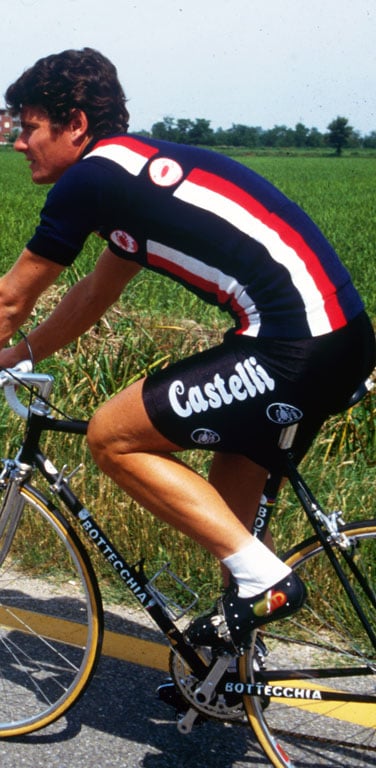
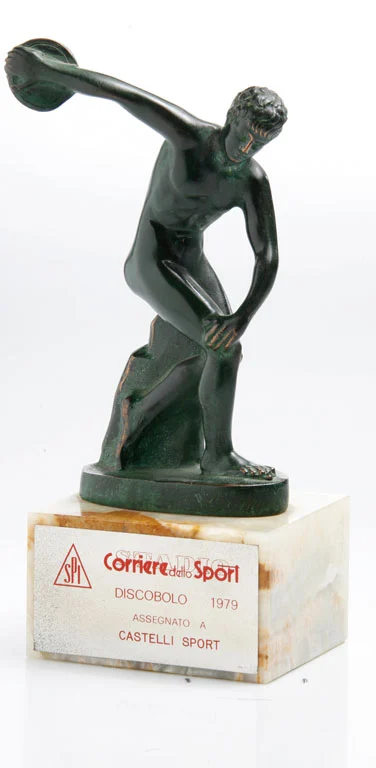
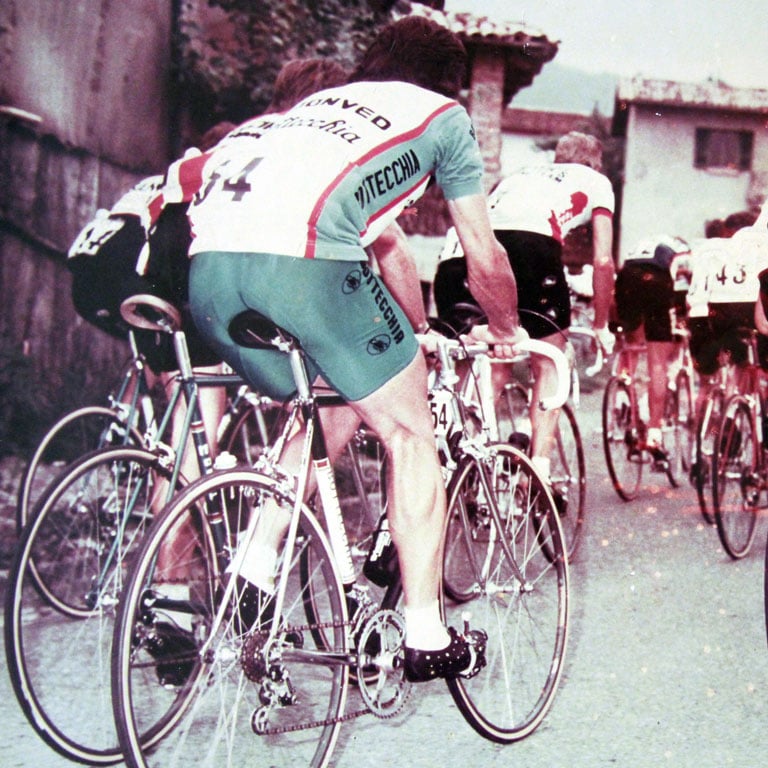
In 1983, Castelli was the first cycling apparel brand to use the sublimation dye process. Castelli pioneered the sublimation dye process, which allowed for the transfer of a full range of colors and detailed designs onto jerseys, enabling cyclists to display sponsor logos on their chests, backs, and shoulders. Cycling and team sponsorships would never be the same.
Everything up until then was done by color blocking (actual pieces of solid dyed fabric stitched together), silk screening, flocking, and embroidering, which created much simpler jersey designs, often with logos on just one side. Sublimation allowed for easier application of more complex logos that were truer to the company’s design.
One of the first teams to use sublimation-printed jerseys was Renault Elf with Bernard Hinault.
In 1983, it was also the year when Bernard Hinault, wearing the first windproof jersey designed by Castelli, won the historic Flèche Wallonne in snowy, rainy, and cold conditions.
Everything up until then was done by color blocking (actual pieces of solid dyed fabric stitched together), silk screening, flocking, and embroidering, which created much simpler jersey designs, often with logos on just one side. Sublimation allowed for easier application of more complex logos that were truer to the company’s design.
One of the first teams to use sublimation-printed jerseys was Renault Elf with Bernard Hinault.
In 1983, it was also the year when Bernard Hinault, wearing the first windproof jersey designed by Castelli, won the historic Flèche Wallonne in snowy, rainy, and cold conditions.
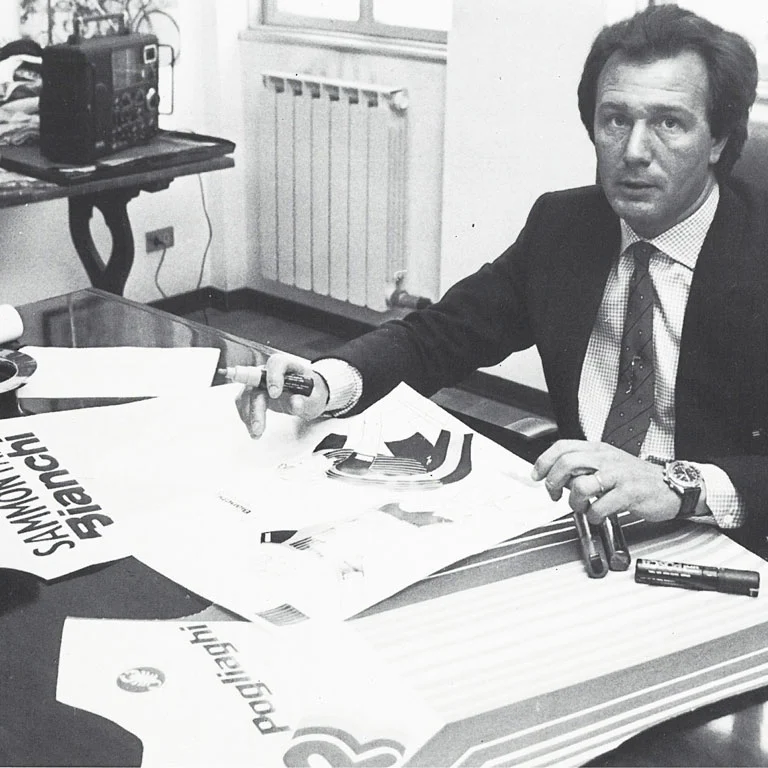
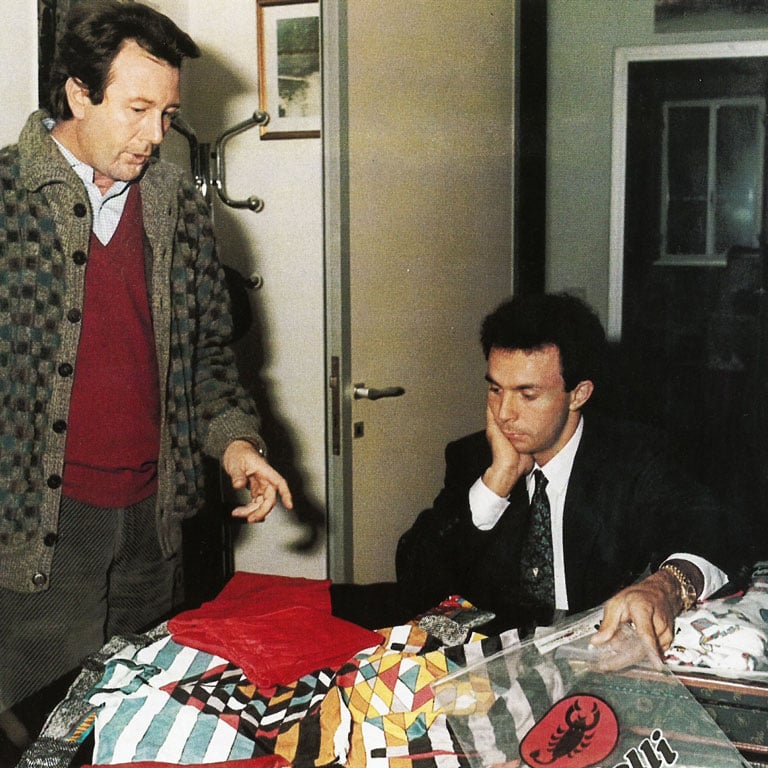
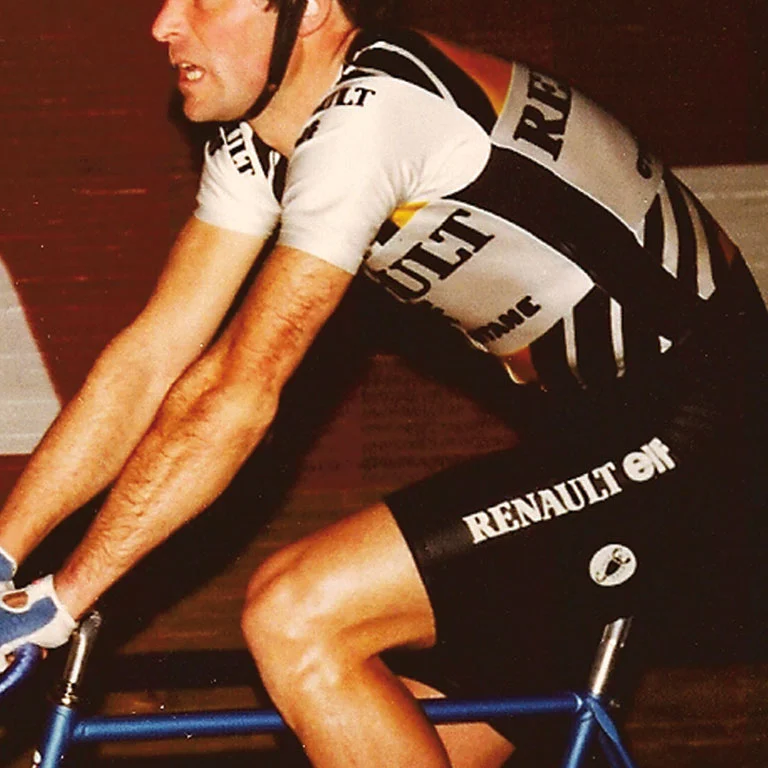
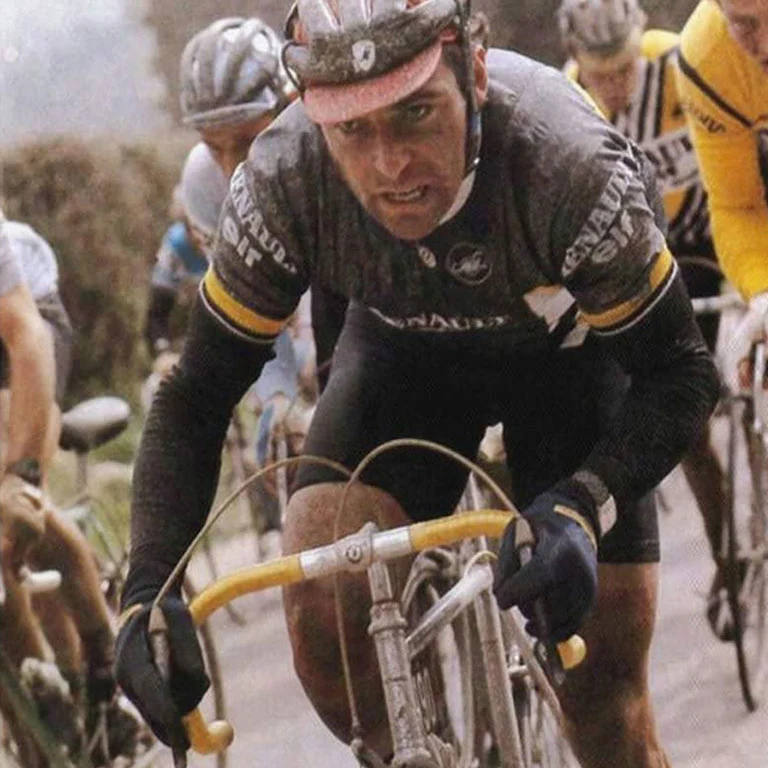
10 years after the birth of the Scorpion, in 1984, Castelli introduced the first thermal clothing, with Francesco Moser being the first to test these garments during the Paris-Roubaix.
Three years later, Castelli also entered the triathlon world with his first mini-collection, which included short tops, shorts, and speedos.
While continuing to churn out innovations, from 1981 to 1992 Castelli produced the leader jerseys for the Giro d'Italia and the Tour de France, as well as outfitting a dozen professional teams.
Three years later, Castelli also entered the triathlon world with his first mini-collection, which included short tops, shorts, and speedos.
While continuing to churn out innovations, from 1981 to 1992 Castelli produced the leader jerseys for the Giro d'Italia and the Tour de France, as well as outfitting a dozen professional teams.
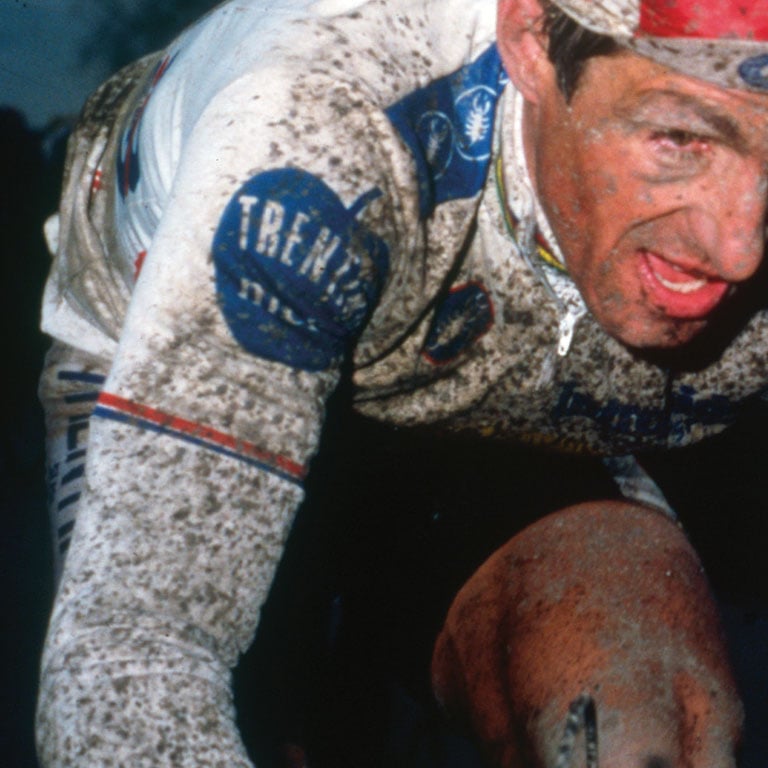
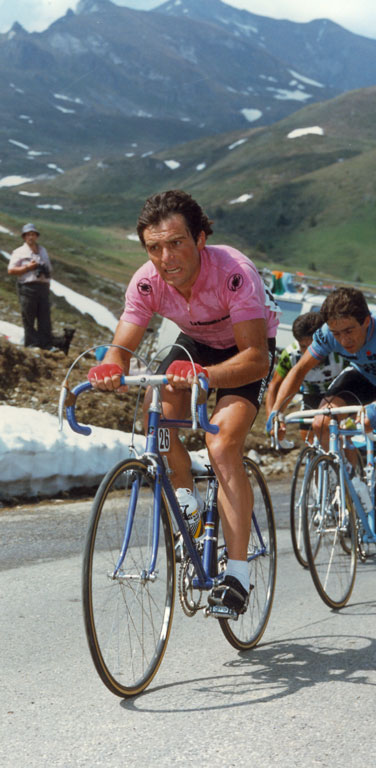
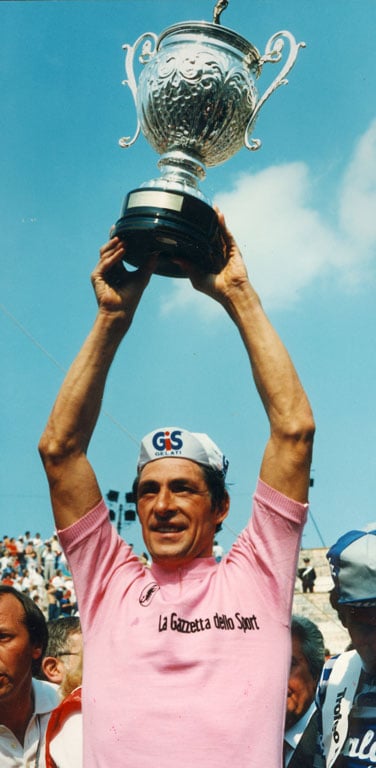
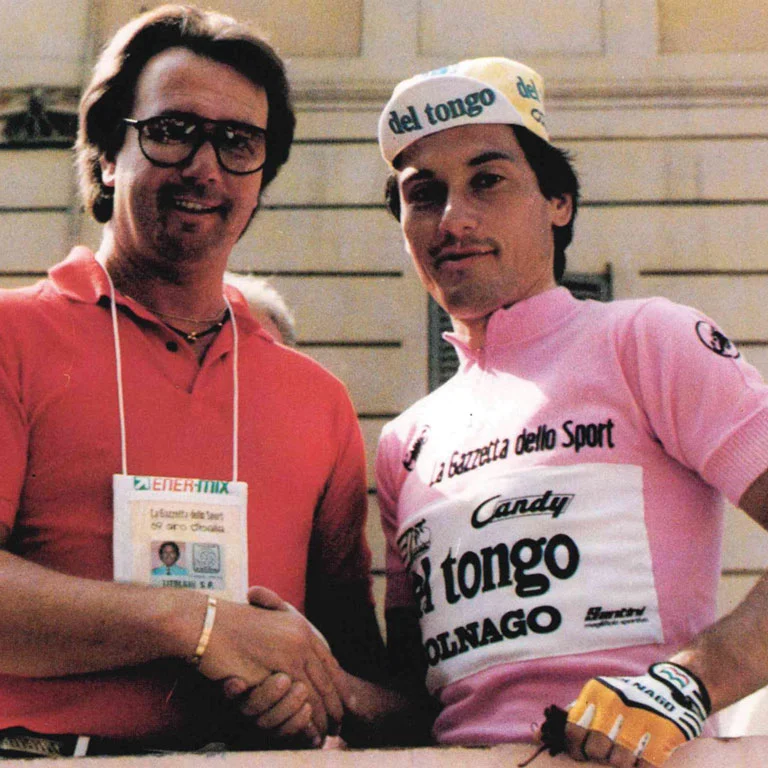
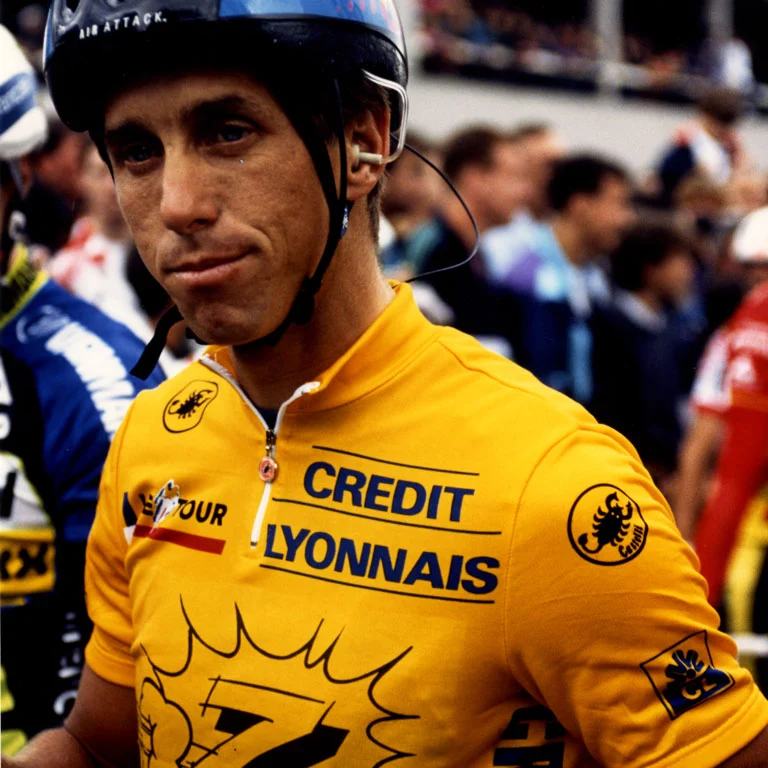
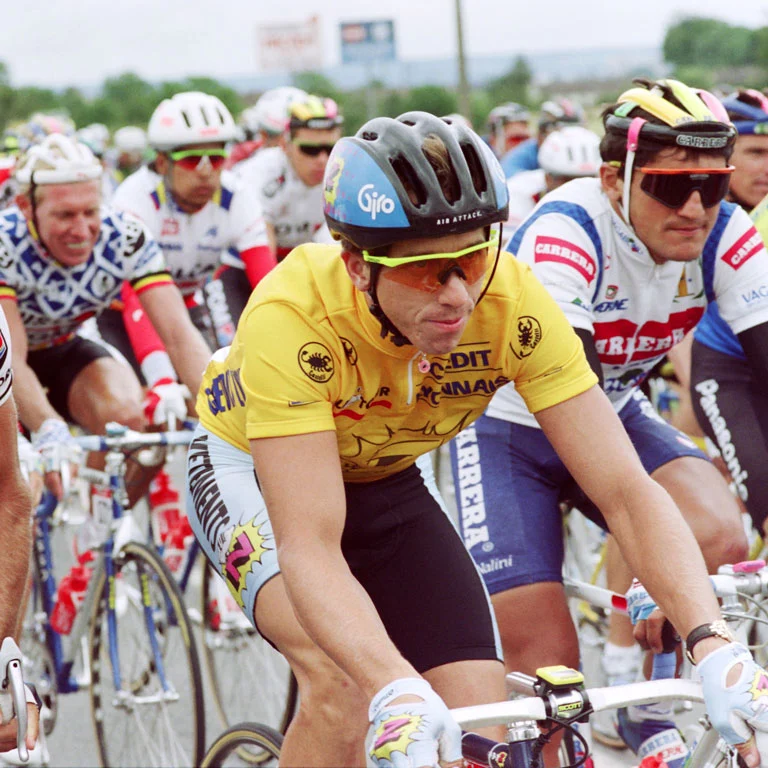
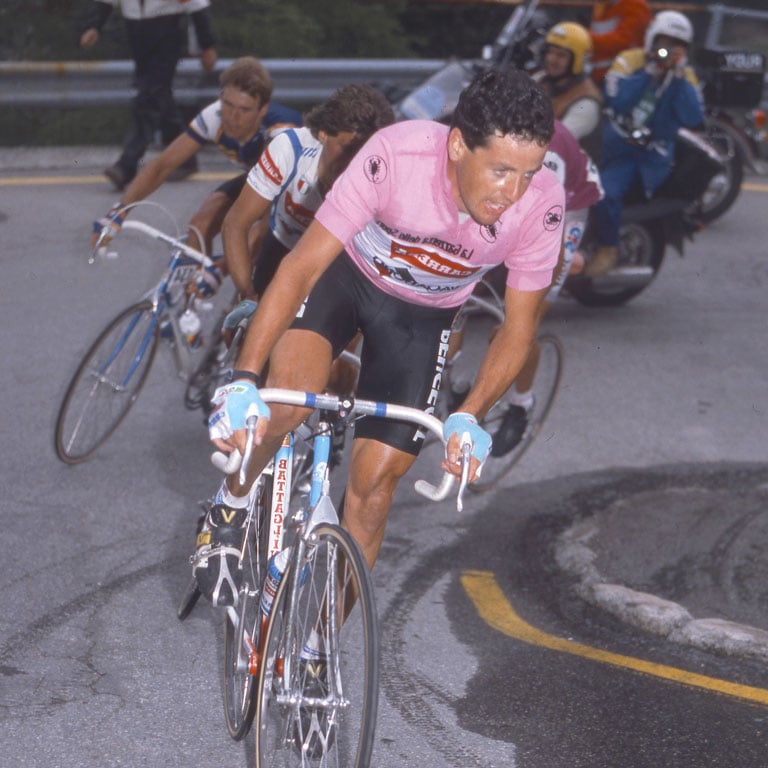
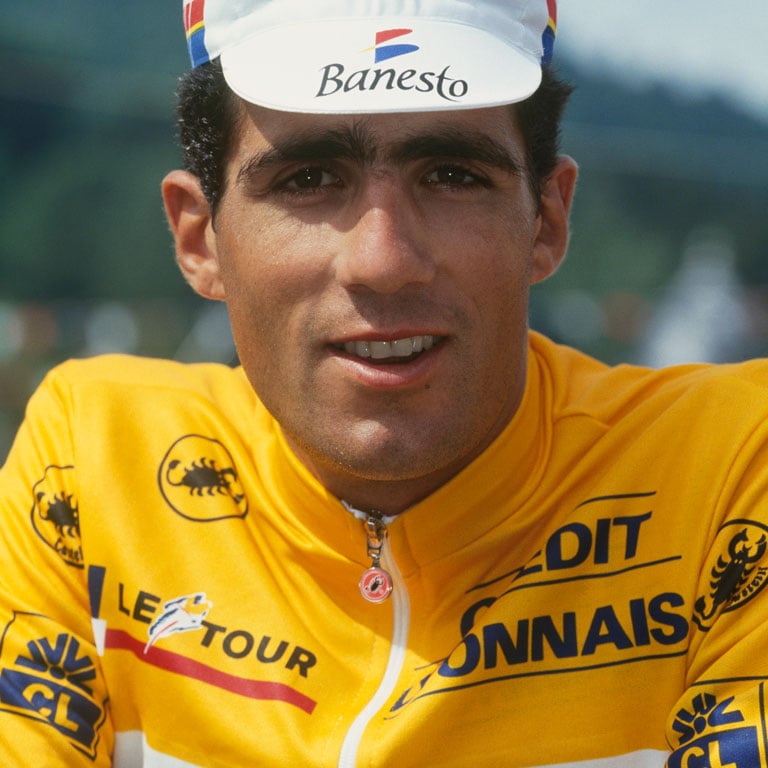
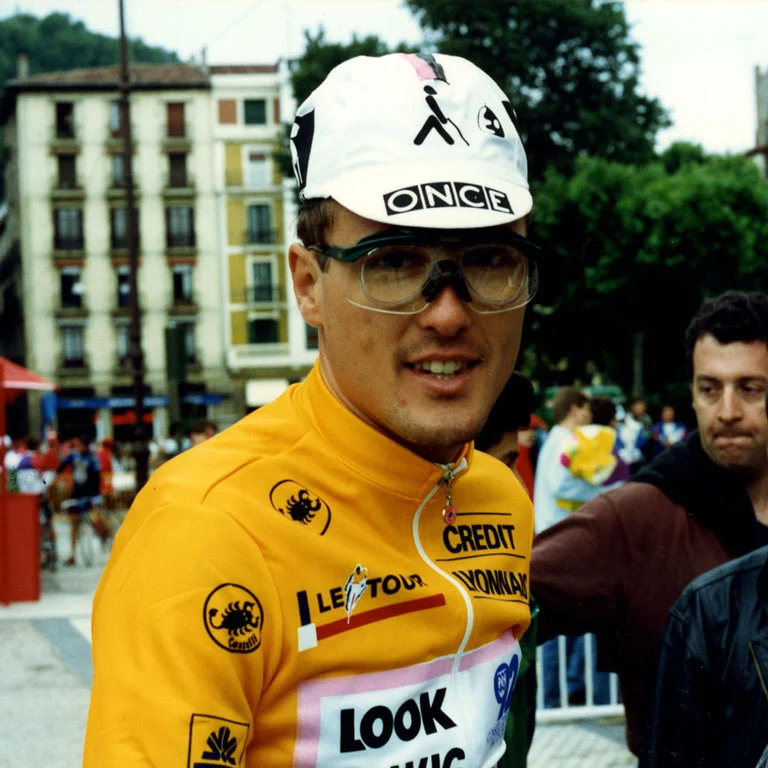
In the 1990s, the brand continued to grow, but in 1995 its story took an unexpected turn due to the tragic and premature death of its founder, Maurizio. At 47 years old, while climbing the legendary Cipressa during the Milan-Sanremo race, he suffered a heart attack that left him with no chance of survival.
Luckily, Maurizio's innovative philosophy and mindset persisted and guided the company even after his death.
At the 1996 Atlanta Olympics, Castelli introduced the first fully aerodynamic speed suit. During that edition, the Italian national track cycling team won gold wearing that speed suit, while Paola Pezzo triumphed in mountain biking.
Luckily, Maurizio's innovative philosophy and mindset persisted and guided the company even after his death.
At the 1996 Atlanta Olympics, Castelli introduced the first fully aerodynamic speed suit. During that edition, the Italian national track cycling team won gold wearing that speed suit, while Paola Pezzo triumphed in mountain biking.
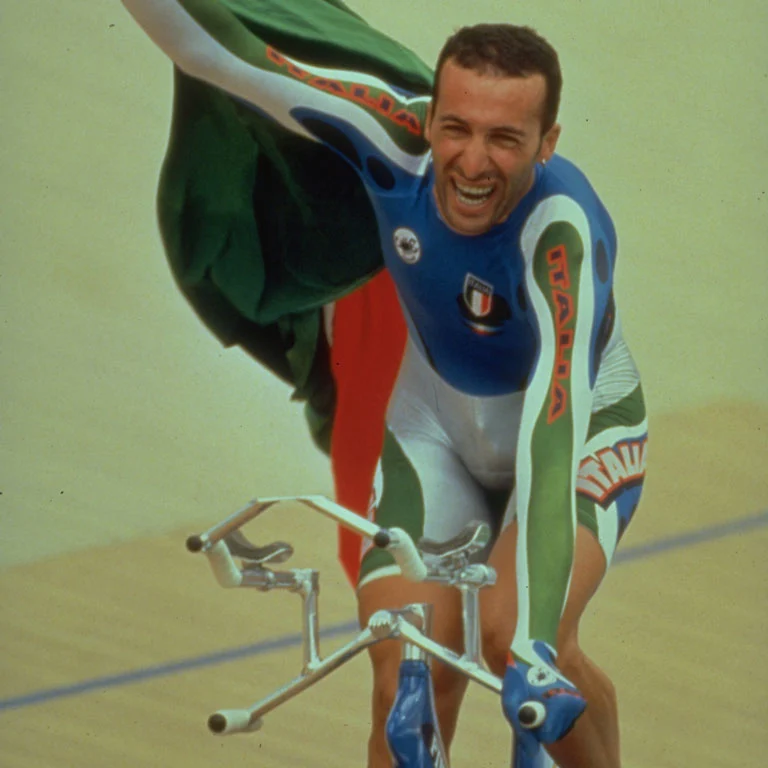
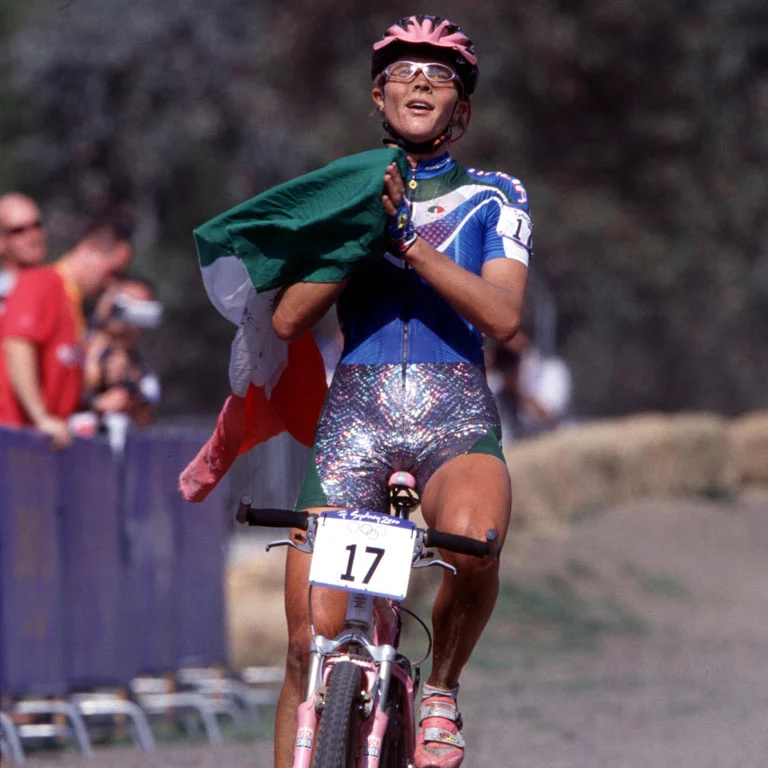
His innovations didn’t stop there. A year later, in 1997, Castelli created the first anatomical seat pad, the Progetto Y, which was applied to modern bib shorts. This seat pad made the classic leather pad obsolete. Subsequently, in 1998, Castelli provided the ONCE Team, which they were sponsoring that year, with the first jerseys featuring the Prosecco breathable treatment, a fabric capable of absorbing moisture.
In the new millennium, Castelli continued on this path, constantly innovating and reinventing itself. The year 2007 was notable for providing the Saunier Duval team with the first aerodynamic racing jersey, the first aerodynamic bib shorts (Free), and the lightest jersey (Superleggera) ever made and used by professionals up to that point. In the same year, Castelli introduced the Giro waistband, replacing the narrow, uncomfortable anti-slip elastic at the bottom of the shorts, thus eliminating the so-called "sausage effect" and completely changing the concept of cycling shorts.
A year later, Castelli introduced the first radiant insulation system (Radiation), revolutionizing winter dressing.
A year later, Castelli introduced the first radiant insulation system (Radiation), revolutionizing winter dressing.
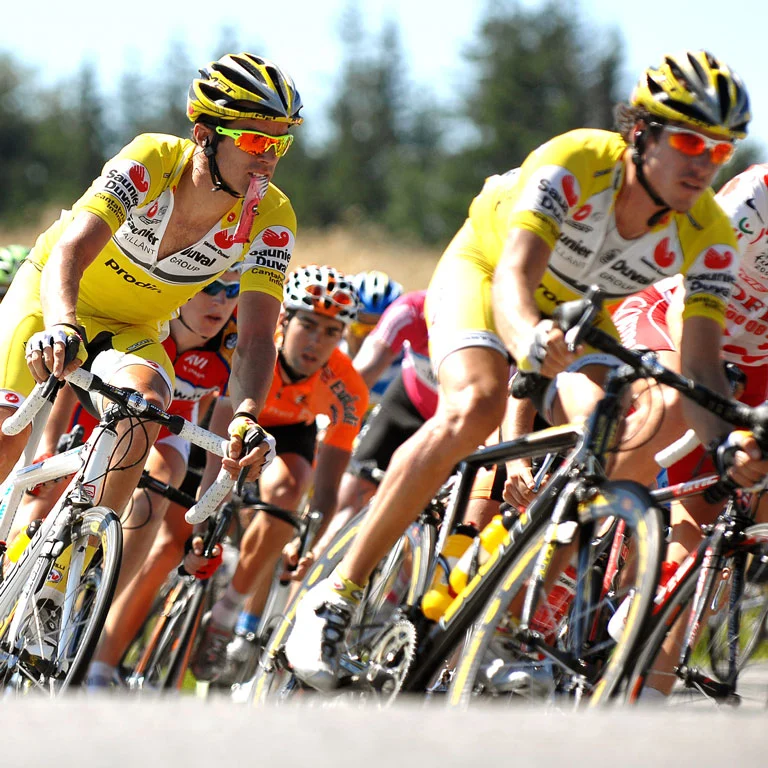
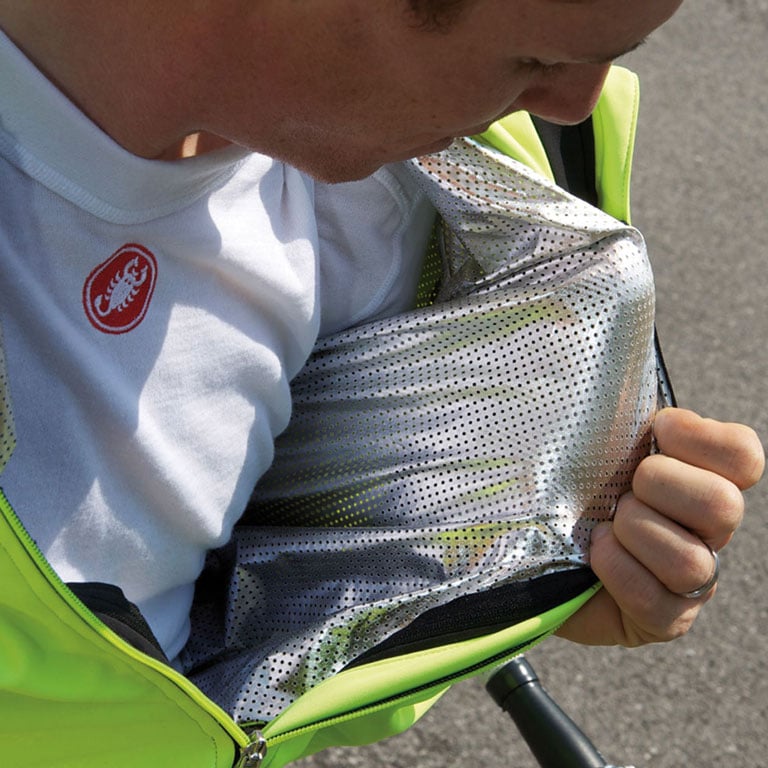
In 2009, Castelli joined a select group of highly innovative cycling brands created to provide the most advanced clothing and equipment to the newly formed Cervélo TestTeam. The team’s goal and value were not so much focused on creating advertising for sponsors, but on developing, testing, and refining the most innovative products on the market, combining technology with innovative style and design, in line with Maurizio's philosophy.
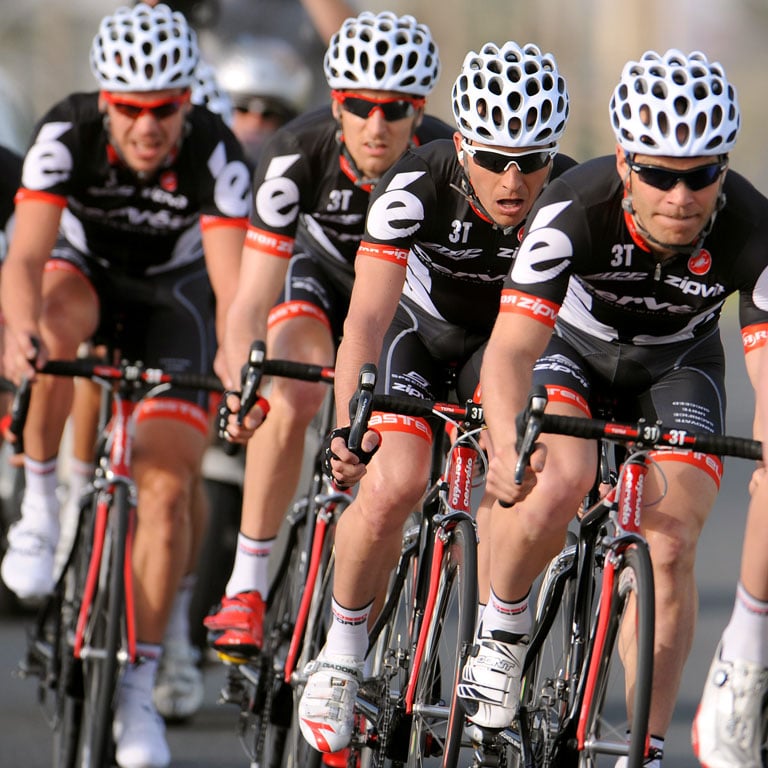
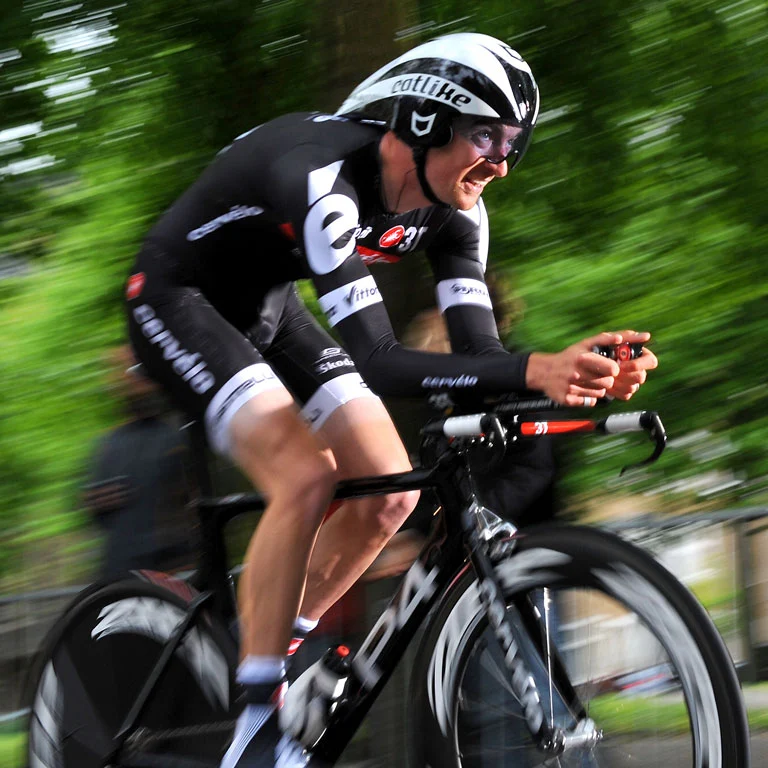
Until 2009, cycling performance apparel meant moisture management. Aerodynamics was only for time trial skin suits. Castelli singlehandedly changed that concept by rethinking what clothing can do. The first Aero Race Jersey was fully functional as a race jersey and yet saved the rider 12 watts at 40/h.
Castelli has continued to refine the Aero Race jersey while every other brand has tried to create its version of the aero jersey with a varying levels of result. The Castelli Aero Race 51. Jersey is a full 24 watts faster than a traditional cycling jersey.
In 2009, the Body Paint shorts were introduced, a new model made from a single piece of fabric, with most components integrated into the seamless fabric. It was so comfortable that it simply felt like you had nothing on.
Castelli has continued to refine the Aero Race jersey while every other brand has tried to create its version of the aero jersey with a varying levels of result. The Castelli Aero Race 51. Jersey is a full 24 watts faster than a traditional cycling jersey.
In 2009, the Body Paint shorts were introduced, a new model made from a single piece of fabric, with most components integrated into the seamless fabric. It was so comfortable that it simply felt like you had nothing on.
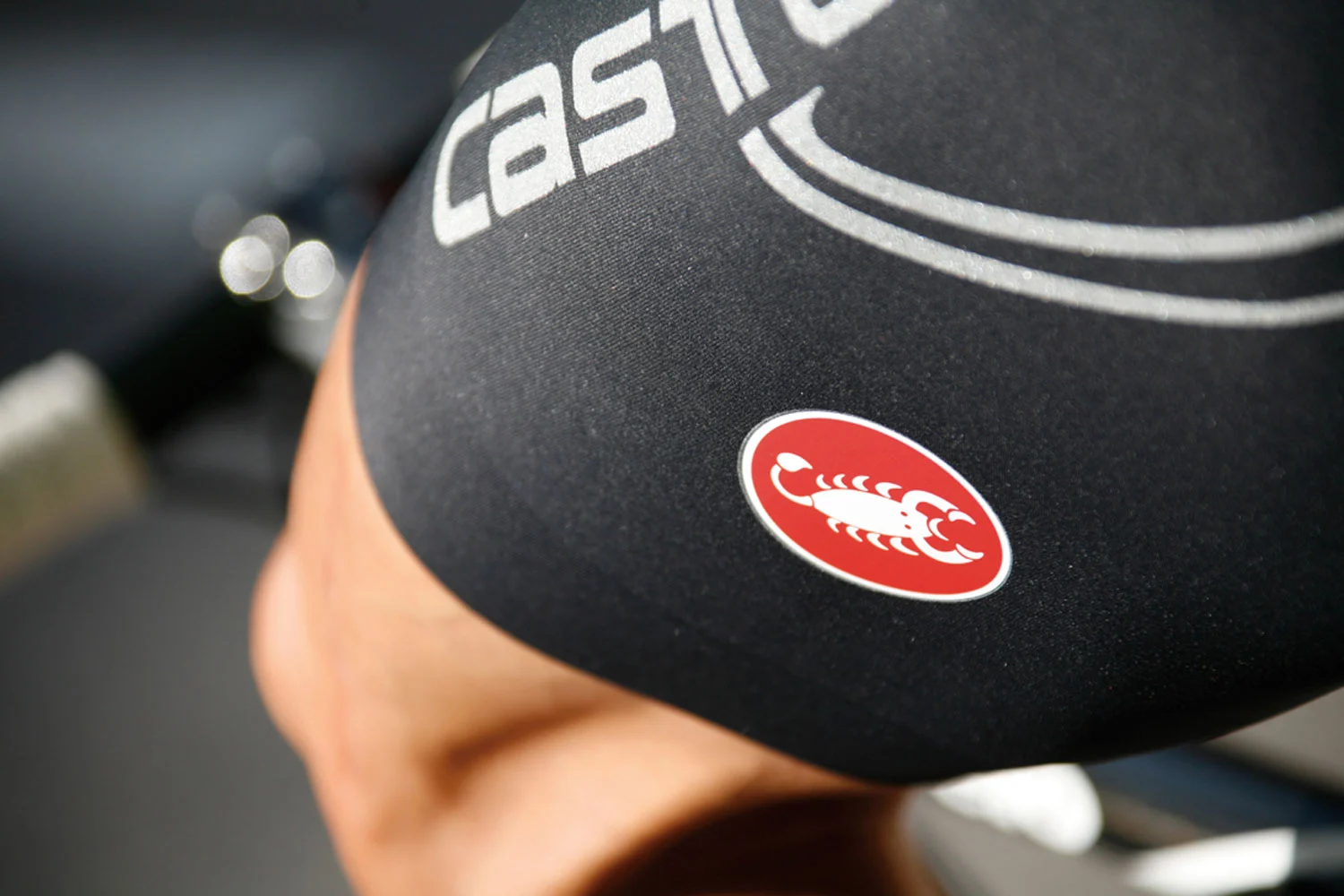
2010 and 2011 were two more extremely important years for the brand's future. Up until that point, Castelli had not managed to significantly change the way pro-riders dressed for cold and rainy conditions, but the introductions in those two years completely turned things around.
Castelli was first to bring nano-technology to cycling with Nano Flex proprietary water repellent fabrics that shed water but without membranes that inhibit breathability. With the Cervelo-TestTeam, the need to improve clothing for cold and wet conditions saw the birth of a modern icon - the Gabba jacket, the first all-weather aerodynamic protection in the peloton. It wasn't long before half the peloton (irrespective of kit sponsors ) adopted the Gabba as the go to piece for cold wet racing. The turning point came on March 17, 2013, during the 104th edition of the Milano-Sanremo, in a context of snow, rain, and cold. Riders from every team wore the Gabba, many of them covering the iconic scorpion logo.
Also in 2011, Castelli introduced the first Sanremo Speed Suit for road races, designed to save precious seconds, and with it, Johan Van Summeren won that year's Paris-Roubaix.
Castelli was first to bring nano-technology to cycling with Nano Flex proprietary water repellent fabrics that shed water but without membranes that inhibit breathability. With the Cervelo-TestTeam, the need to improve clothing for cold and wet conditions saw the birth of a modern icon - the Gabba jacket, the first all-weather aerodynamic protection in the peloton. It wasn't long before half the peloton (irrespective of kit sponsors ) adopted the Gabba as the go to piece for cold wet racing. The turning point came on March 17, 2013, during the 104th edition of the Milano-Sanremo, in a context of snow, rain, and cold. Riders from every team wore the Gabba, many of them covering the iconic scorpion logo.
Also in 2011, Castelli introduced the first Sanremo Speed Suit for road races, designed to save precious seconds, and with it, Johan Van Summeren won that year's Paris-Roubaix.
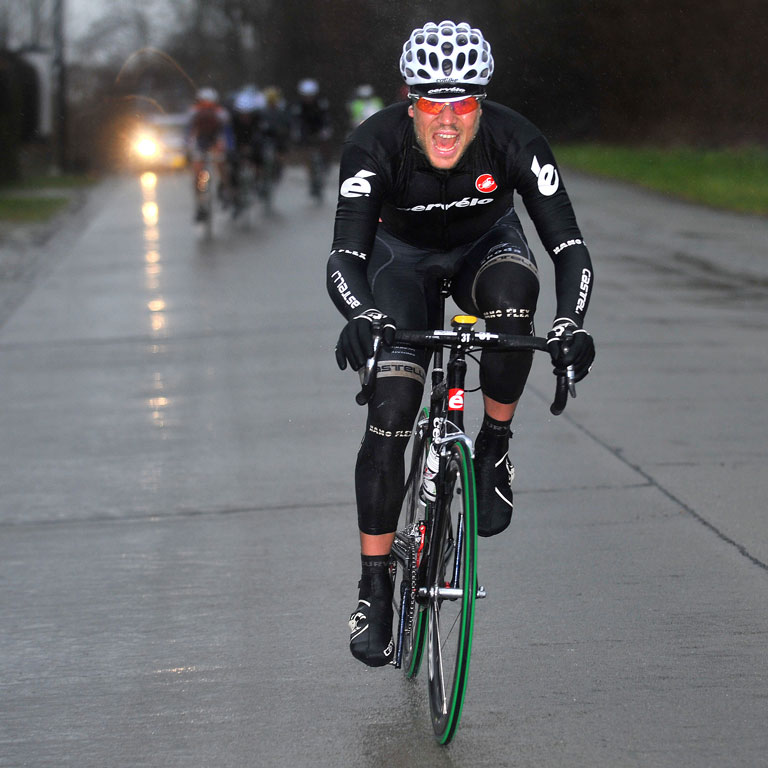
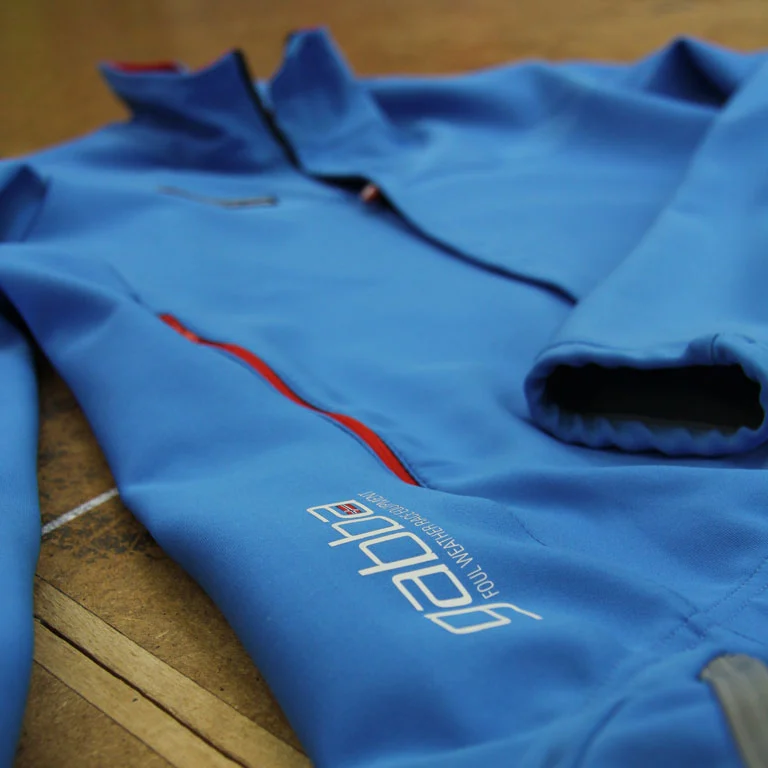
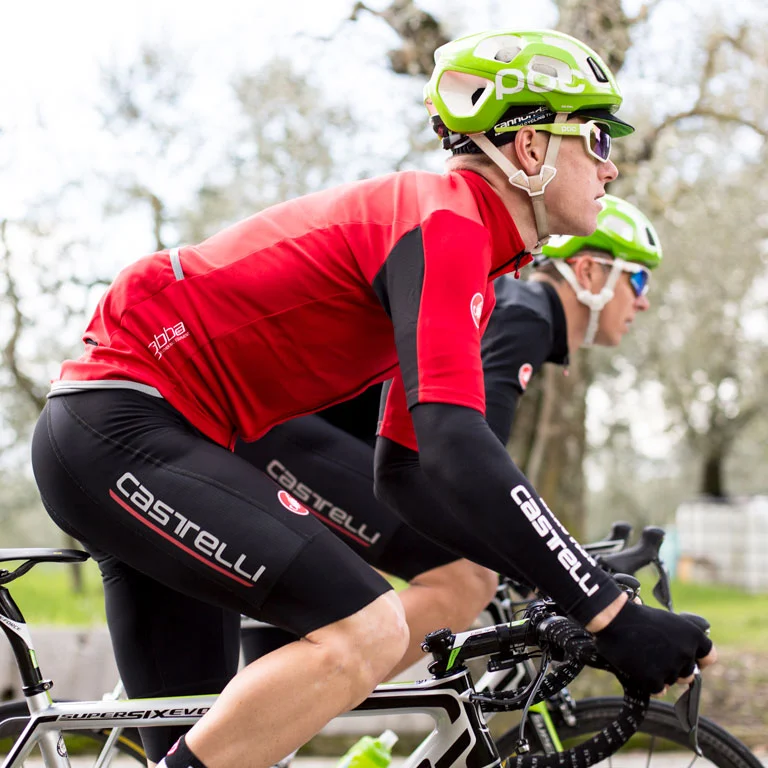
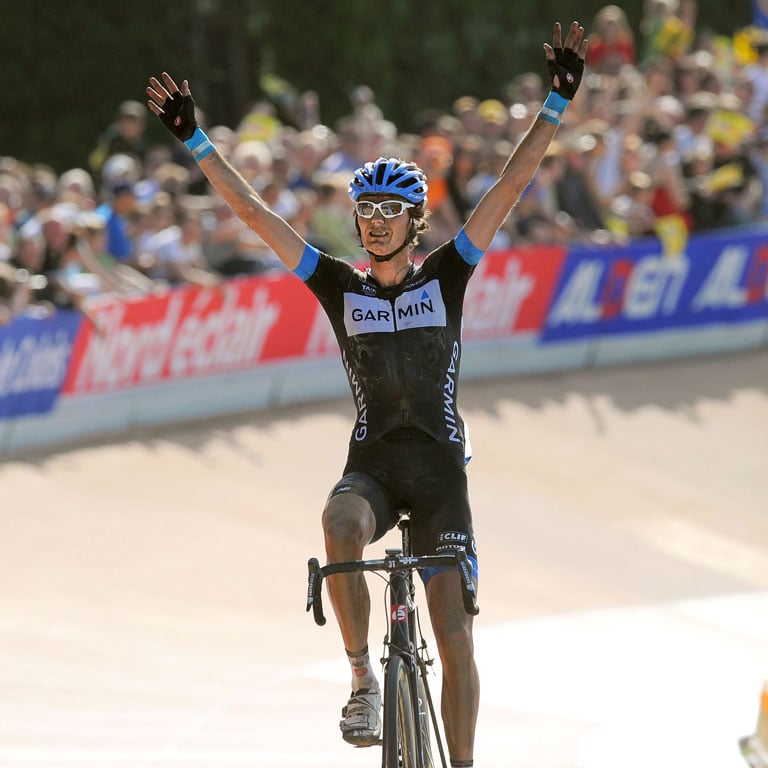
In 2012, Castelli was the mastermind behind Ryder Hesjedal's success at the Giro d'Italia. Wearing the new Castelli Body Paint 3.0 Speed Suit during the 30 km time trial on the final day, Ryder made up a 30-second deficit and claimed the Maglia Rosa with a 16-second advantage.
That same year, Castelli officially entered the triathlon market with clothing specifically designed for swimming, cycling, and running. Here too, Castelli managed to innovate by introducing the first aero speed suit, which today represents the standard for every competitive triathlete.
That same year, Castelli officially entered the triathlon market with clothing specifically designed for swimming, cycling, and running. Here too, Castelli managed to innovate by introducing the first aero speed suit, which today represents the standard for every competitive triathlete.
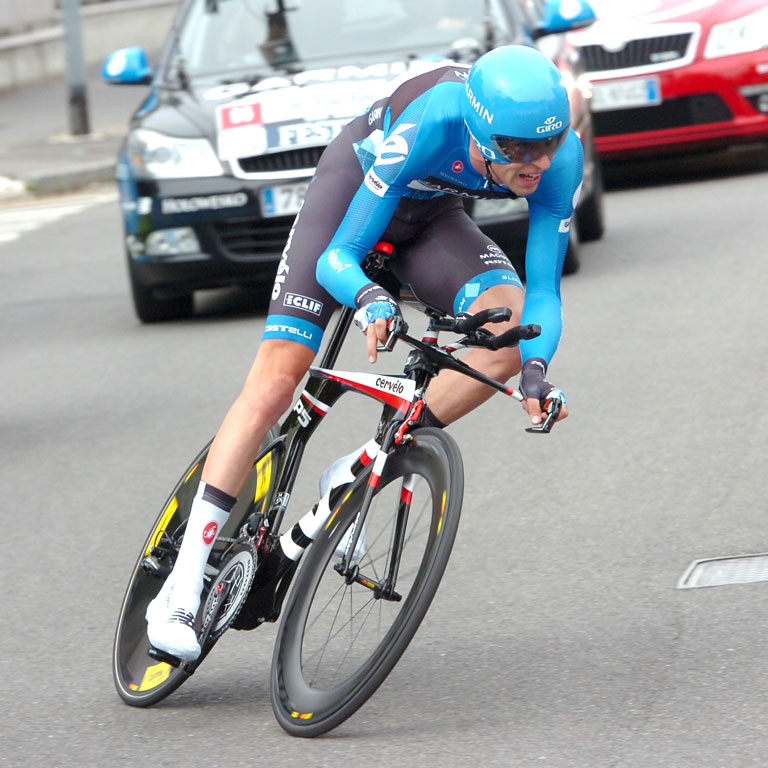
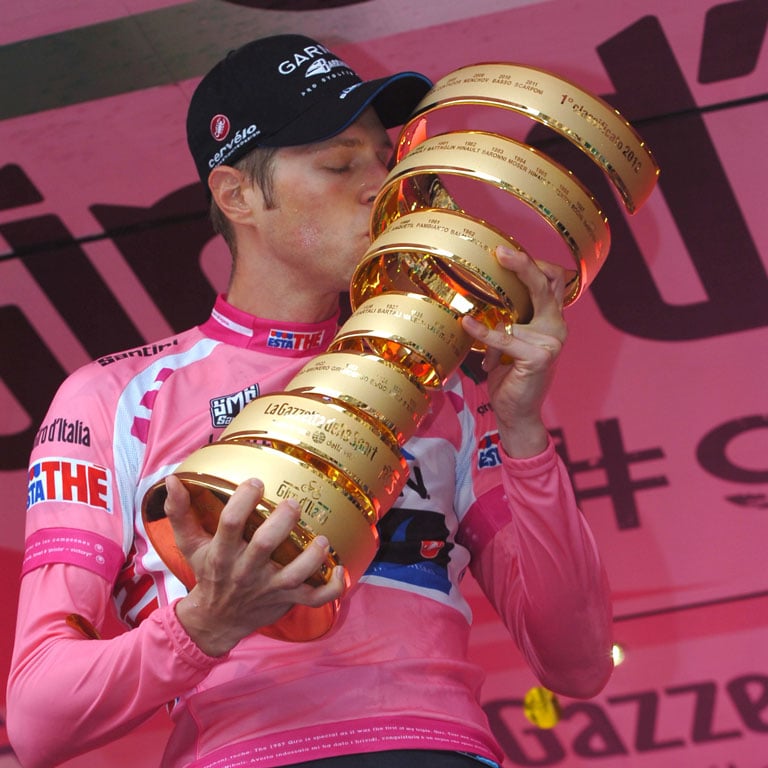
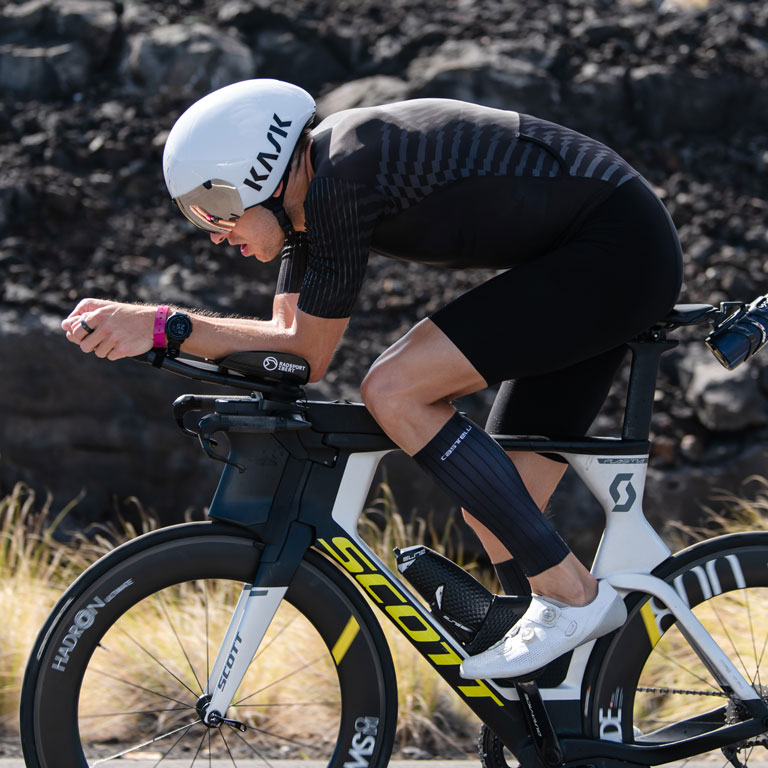
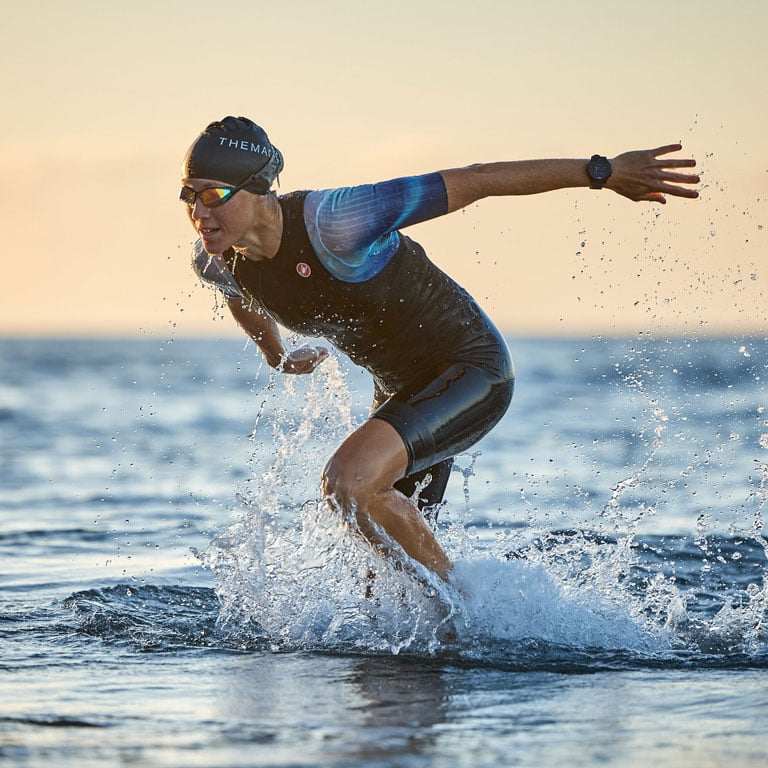
The last decade has seen the brand's continuous pursuit of perfection, focusing primarily on the development of existing products rather than the conception of new ideas.
Over time, we've reached the sixth generation of the aerodynamic Free bib shorts and the eighth generation of the Aero Jersey, alongside products like the Vortex Skinsuit and the lightweight, breathable Climber's Jersey.
Over time, we've reached the sixth generation of the aerodynamic Free bib shorts and the eighth generation of the Aero Jersey, alongside products like the Vortex Skinsuit and the lightweight, breathable Climber's Jersey.
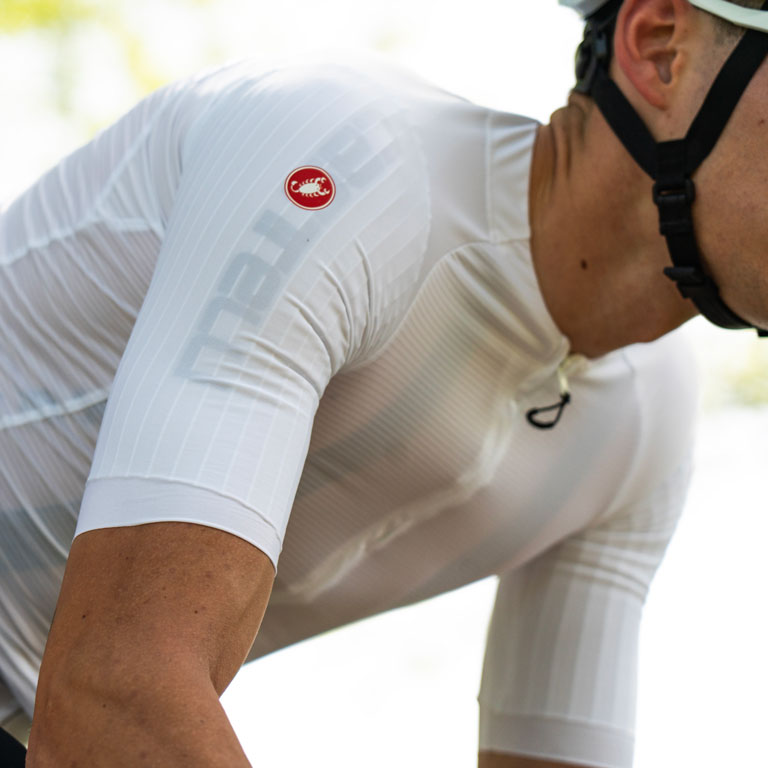
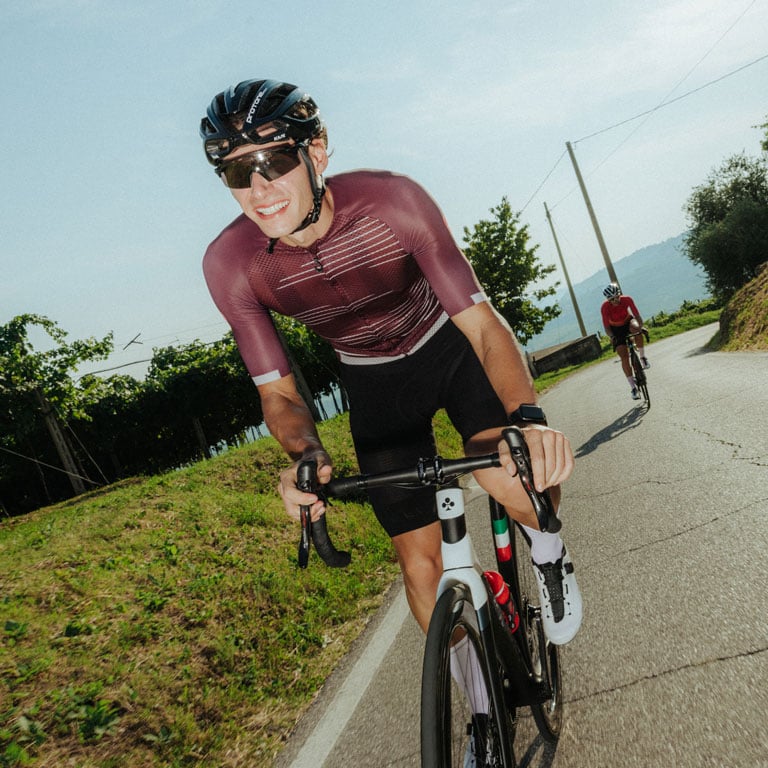
Castelli continue to race, continue to listen and continue to push the boundaries of what is possible in cycling clothing. In the past three years, two new concepts, such as the Premio shorts and the Espresso collection, have made Castelli a more premium brand and more youth-oriented.
